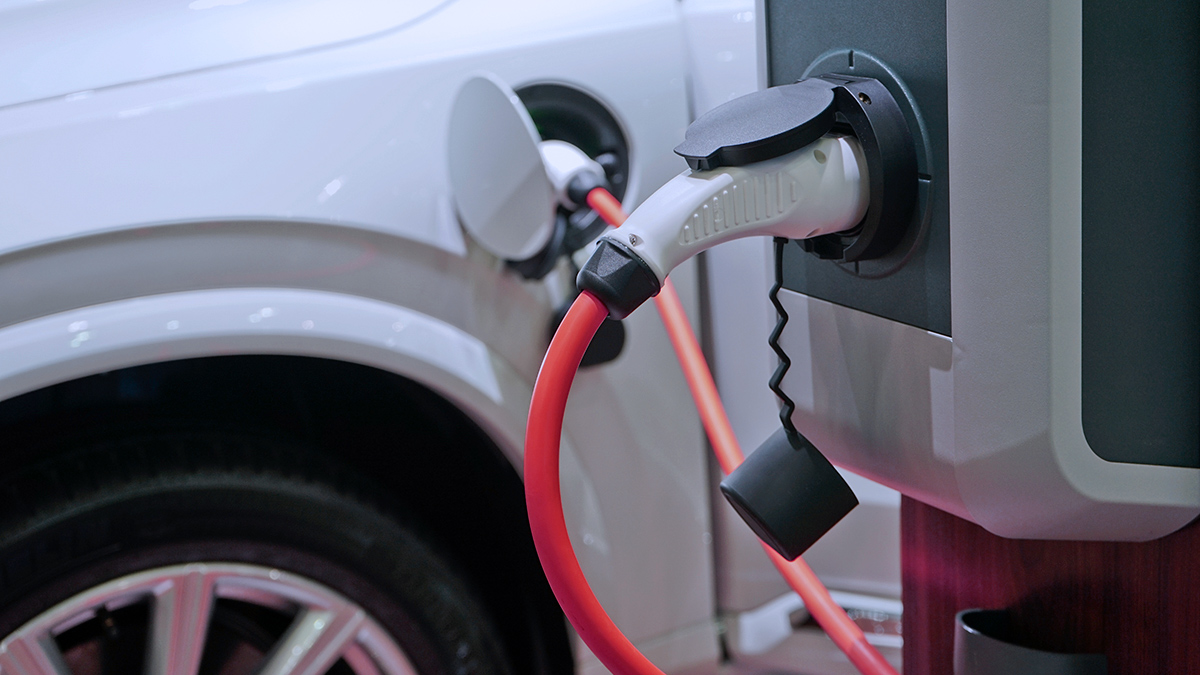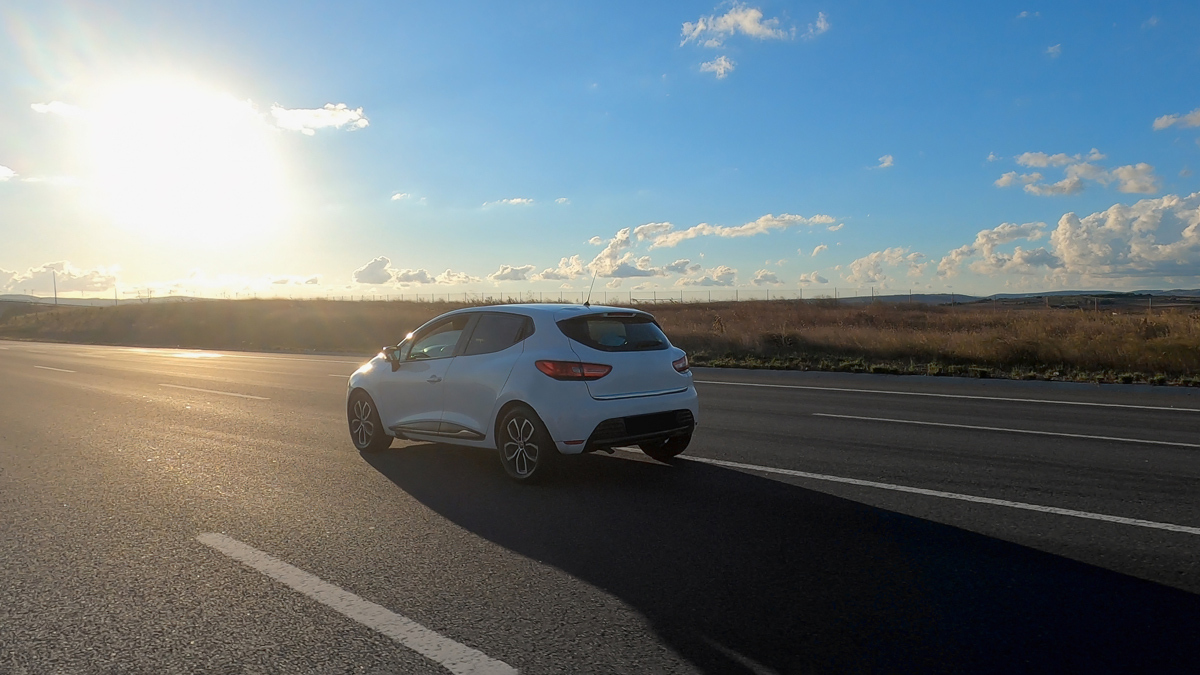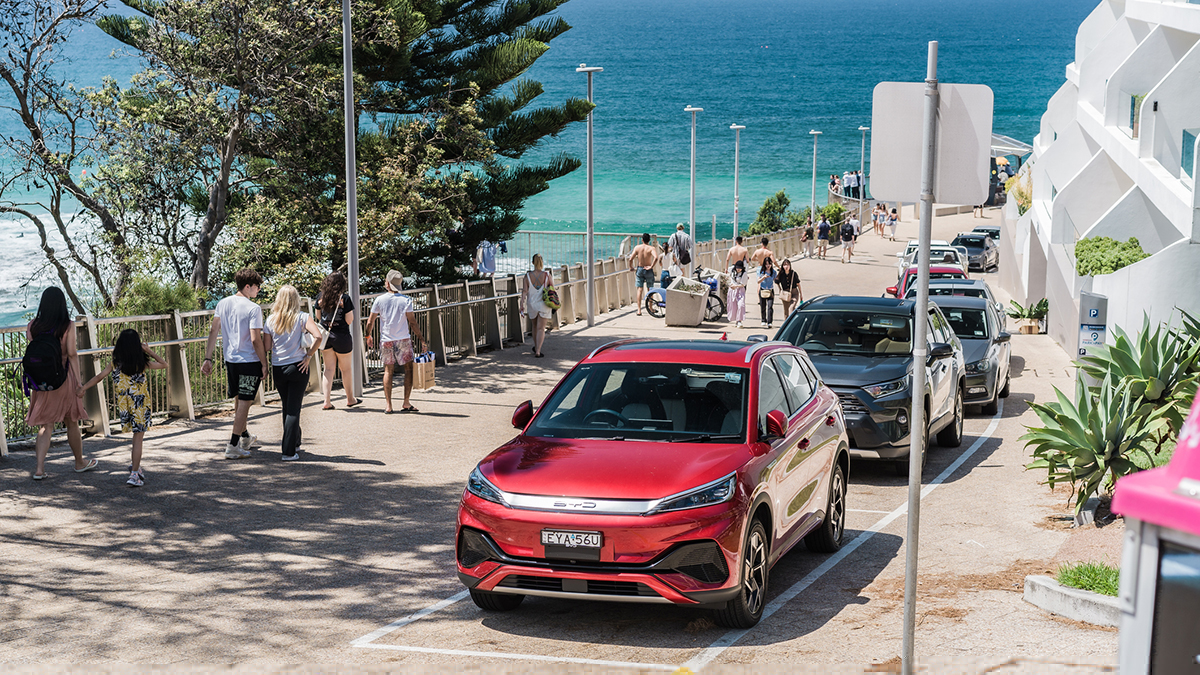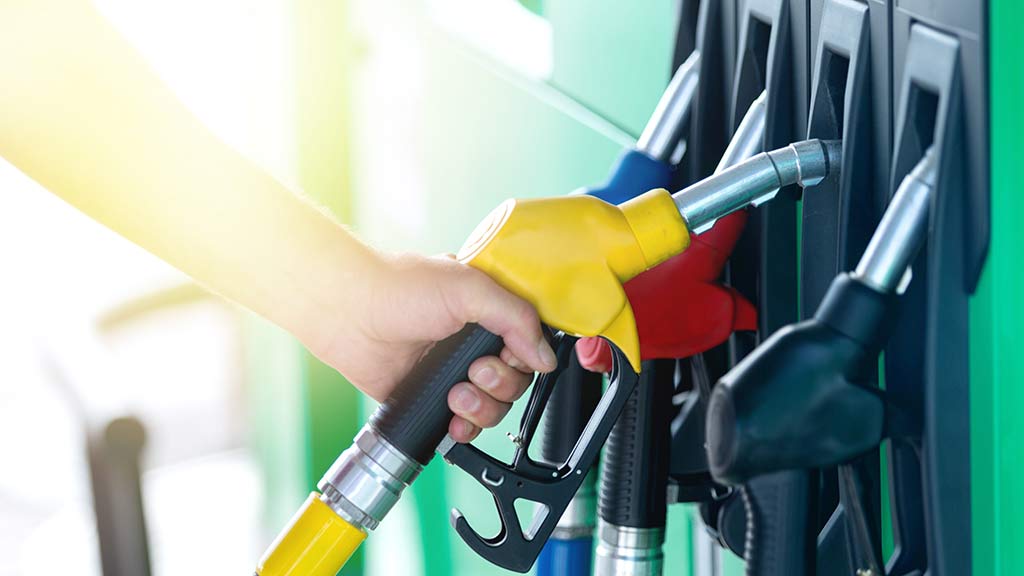Get our independent lab tests, expert reviews and honest advice.
Electric vehicle charging

Australians have been slow to embrace electric vehicles (EVs) compared to drivers in the US, Europe and China. This is due to several factors, including the price of EVs, but also concerns about how practical they are for regular medium- to long-distance drives. This is known as ‘range anxiety’.
On this page:
- Types of electric car
- Driving ranges for electric cars
- How do you charge an EV?
- EV charger levels: Slow, medium and fast
- Types of EV charging plugs
- Charging at home
- Charging at a public charging station
Range anxiety is simply the fear that the car battery will be empty before you reach your destination or a charging station. In a country where many people like to drive a few hundred kilometres or more in a single trip, and where government support for EVs and charging stations has been slow to appear, this is a natural concern.
EV ranges are in fact practical enough for most trips, and there are several charging options available, though it’s not all good news. We take you through the options for charging an EV at home and while out and about, including the types of charger, how long they take to charge the car, typical costs and more.
Types of electric car
There are three types of vehicle that use electric motors. Of these, plug-in hybrid EVs and battery EVs can be charged directly by plugging into a charger, while standard hybrid vehicles charge themselves.
- Hybrid vehicles (aka “mild” hybrids) have both an internal combustion engine (ICE) (i.e. a petrol or diesel engine) and an electric engine with a very small battery; the battery is charged only by the ICE and by energy captured while braking. It can’t be charged directly by plugging the car into a power point. The combination of ICE and electric engines makes hybrid vehicles very fuel-efficient, but still dependent on petrol or diesel fuel.
- Plug-in hybrid electric vehicles (PHEVs) are similar to regular hybrid vehicles, and the battery is charged in the same way, but it can also be charged directly by plugging the car into a power source. A PHEV battery is larger than in a regular hybrid, but smaller than those in pure battery electric vehicles. PHEVs can do short trips purely on battery power (up to 80km or so, depending on the car), meaning that short commutes and shopping runs can be done as an electric vehicle, with the petrol or diesel engine for backup and for longer journeys. PHEVs offer a lot of flexibility, but like regular hybrids, they come with the service and maintenance costs of an internal combustion engine, and are dependent on petrol or diesel fuel.
- Battery electric vehicles (BEVs) are purely electric, and therefore need much larger batteries than a PHEV, but don’t have any dependency on petrol or diesel fuel, and their electric motors are comparatively simple and inexpensive to maintain.
Driving ranges for electric cars
PHEVs generally have a longer driving range than most purely electric BEVs, thanks to the petrol or diesel engine; and if you’re on a very long journey, refuelling a petrol car from empty to full is much faster than charging a BEV. But in electric-only mode, PHEVs have a much shorter range, because of the smaller battery and added weight of the internal combustion engine.
Typical ranges of BEVs
Battery size: The range, or driving distance, for a BEV is largely determined by the size (capacity) of its battery. The battery size is measured in kilowatt-hours (kWh). You may be used to seeing battery power measured in amp-hours (Ah), for instance with power tools, but useable battery capacity also depends on voltage. Kilowatt-hours are a more convenient unit because they factor in voltage as well, and give you one simple number to rate the battery size, much the same way that the size of the tank in a petrol car is a useful indicator of its range (assuming you also know its fuel efficiency).
Note that the actual usable capacity of the battery is usually a bit less than the overall stated capacity. For example a 64kWh battery might have 62kWh of usable energy. That’s because most lithium batteries shouldn’t be fully discharged to zero, as it can damage the battery, and the battery management system will not allow it.
Battery chemistry: Different types of lithium battery are currently in use in EVs. The most common type is lithium nickel manganese cobalt (NMC), which has good energy density (i.e. more stored energy for the weight), and is typically used in longer-range cars. However it contains cobalt, a metal with limited availability and problematic production, and these batteries have a higher risk of thermal runaway (fires) than other types. (Fires caused by EV batteries are thankfully rare, but they can be very severe when they do happen.) It’s generally recommended to keep NMC batteries charged only up to about 80%, to maintain ideal battery health, though an occasional 100% should be OK.
Another increasingly common type is lithium iron phosphate, aka lithium ferrous phosphate or LFP. This has less energy density than NMC batteries, so it doesn’t give as much range per kg of battery weight, but is cheaper to make, less susceptible to thermal runaway, and doesn’t contain certain problematic materials such as cobalt. LFP batteries are currently found in base model Tesla RWD models, some MG models and cars from BYD, among others. LFP batteries can be charged more regularly to 100%, and indeed some manufacturers recommend this.
As for any car, the driving range for a PHEV or EV will usually be reduced by long mountain climbs, carrying more passengers and luggage, headwinds, and driving at high speeds
WLTP driving range: You’ll often see the driving range quoted as the “WLTP” range. WLTP stands for World harmonized Light-duty vehicles Test Procedure, and is a standardised set of tests designed to measure a car’s fuel efficiency and exhaust emissions in realistic driving situations. It also measures the actual driving range of a BEV.
As for any car, the driving range for a PHEV or EV will usually be reduced by long mountain climbs, carrying more passengers and luggage, headwinds, and driving at high speeds. Very cold and hot temperatures also tend to reduce battery performance. Use the claimed driving ranges as a guide, not a guarantee.
| Mini Cooper SE Electric | 32.6 | 234 |
| Nissan Leaf (base model) | 40 | 270 |
| MG ZS EV | 44.5 | 263 |
| Tesla Model 3 Standard Range Plus | 54 | 448 |
| Volvo XC40 Recharge | 78 | 418 |
| Tesla Model 3 Long Range AWD | 79.5 | 580 |
As you can see, the battery size isn’t the only factor in the driving range; for example, a bigger heavier car may get less range from a given battery size than a smaller lighter car.
What EVs are available in Australia?
The Electric Vehicle Council lists the current EV models on the Australian market on its site.
For a more comprehensive look at the range of pure electric BEVs, PHEVs and hybrid cars on offer in Australia, go to the Government’s Green Vehicle Guide and look for the Advanced vehicle search. Search by fuel type and find out the range, annual fuel costs and energy consumption for each model.
How do you charge an EV?
All plug-in EVs in Australia have a lithium-ion battery. The plugs and connectors can differ between makes of vehicle so not all types of charge points can be used with all vehicles.
There are two things to know about the connection used between an EV and the EV charging station.
- How fast will it charge the car?
- What type of connection is the plug?
EV charger levels: Slow, medium and fast
EV chargers are graded into three levels, based on how fast they can charge an EV’s battery.
In this section, we use three types of cars as examples for charging times on the different levels of charger:
- very small battery PHEV: such as a 2021 Mitsubishi Outlander, 13.8kWh battery
- small to medium battery: such as a 2021 base model Nissan Leaf, 40kWh battery, or MG ZS EV, 44.5kWh battery
- large battery: such as a 2021 Tesla Model 3 Long Range, 75kWh battery.
These plug into a standard 10A power point and deliver a slow “trickle” charge at about 2kW per hour. Typically the cable that’s supplied standard with any EV is a level one charger. All you need is a standard power point (AKA a general purpose outlet or GPO) within a few metres of the car, and you can plug in and charge away (but see the safety notes below).
This is the slowest type of charger. It’s OK for a very small battery (e.g. PHEV) or infrequent driver, but might not be fast enough for a frequent driver of a BEV. The charging is faster if you have a 15A power point to plug into.
On a 10A power point, approximate charging times from empty to full would be:
- very small battery PHEV (about 14kWh): 7 hours
- small to medium battery (about 40kWh): 20 hours
- typical large battery (about 75kWh): 37 hours.
Installation cost: Effectively none, since the cable is usually included with the car. If you don’t have an available power point in your garage, then there will be a cost for an electrician to install one.
Safety notes: A few caveats apply when charging an EV via a power point. The car will usually need to be plugged in for hours, with the charge running at the maximum capacity of the power point. This can stress the power point and its wiring. An old or faulty power point may overheat or fail in other ways, leading to electrical and fire hazards.
If you’ll be using a power point to charge your EV, take these steps for safety.
- Use a power point that is weatherproof (either it’s under cover, or specifically made for the outdoors)
- Have the power point checked by an electrician to ensure it and its wiring are up to the task
- Ideally it should be on its own dedicated circuit (i.e. no other outlets or appliances connected)
- Avoid using an extension cord; even “heavy duty” extension cords may not be sturdy enough for the current load they’ll have to carry. If you really need one, see if your electrician can custom make one that’s genuinely suited to the job.
This article from our solar partner SolarQuotes goes into more details.
This is a dedicated charging unit on the wall, and can deliver 7.2kW from a 240V AC single phase connection. It’s much faster than a level 1 charger, and is fast enough for most drivers of a BEV. Installation needs to be done by a licenced electrician, and preferably one who’s familiar with EV charger installations.
These are the typical type of charger you’ll want at home if you want to fully charge your car overnight, and are usually the type of public charger you’ll find in shopping centre car parks and similar locations.
Approximate charging times from empty to full would be:
- very small battery PHEV (about 14kWh): 2 hours
- small to medium battery (about 40kWh): 5.5 hours
- typical large battery (about 75kWh): 10.5 hours
A type 2 charger on a three-phase connection can deliver about 22kW, so charging is about three times faster than the times above.
Installation cost: About $1000 to $3000 depending on the specifications. Installation will usually add a few hundred dollars to the cost (more, if the installation is complicated).
These are high-voltage direct current (DC) chargers, usually installed as public charging stations such as the Tesla fast charger network. They can deliver from 50kW up to 350kW, depending on the type of charger. Many current EVs can only handle up to 50kW charging. It’s important to know what levels of charger your EV can actually use.
Charge times for a level 3 therefore only apply for those EVs that can actually use them, such as Tesla models. A typical Tesla Model 3 could be fully charged within 1.5 hours using one of these fast charging stations. 30 minutes or less will usually be enough of a top-up for most drivers.
Installation cost: From $25,000. Obviously these are not aimed at home installations, but it can be done if you have the money and the necessary electricity infrastructure.

Types of EV charging plugs
The level of power that the charging point on the wall can deliver is only one part of the EV charging situation; the other is the type of charging port on the charger and the car itself. These plugs and ports have multiple pins; some are for transferring electricity, and others are data connections used by the car and charging station to manage the electricity flow in the best way. Some EVs have multiple connection type options.
Type 1
This is a five-pin design, not so common in Australia these days. Also known as J1772 or SAE J1772, it’s mainly found on older models of the Mitsubishi Outlander PHEV or Nissan Leaf.
Type 2
A seven-pin design, this is the standard type used in Australia and it’s what you’ll find on pretty much all current BEVs sold in Australia. It’s also known as an IEC 62196 or Mennekes plug.
CHAdeMo
Short for “charge de move” (“move using charge” or “charge and go” in French) but also “(o)cha de mo ikaga desuka” (“do you want some tea?” in Japanese, symbolising that the car can charge in the time it takes you to have a tea break). This is a fast charger connection used by several EV brands, mainly Japanese but including some European brands.
CCS
Another fast charger type of connection, CCS (Combined Charging System) has a set of small pins and two large pins below them. There are two types: CCS1 (compatible with Type 1 connections) and CCS2 (compatible with Type 2 connections). In Australia, many EV brands have a CCS2 port on the car, also known as a CCS Combo, meaning it can plug into either a Type 2 charger or a CCS fast charger. This is good because you can use a Type 2 charger at home, and a CCS fast charger when out and about. Cars featuring this CCS2 Combo port include the Tesla Model 3, Hyundai Ioniq and Porsche Taycan among many others.
Adaptors
There are many adaptors available to allow a car with one plug type to connect to a different type of charging station. There are limits of course; not all combinations are available, and while the right adaptor might allow a car to charge from a level 3 fast charger that would otherwise not be compatible, the car battery will still only charge at its own maximum rate. Adaptor connectors or cables usually cost a few hundred dollars, and can be a useful investment if there are conveniently located but otherwise incompatible chargers you’d like to use.
Charging at home
The easiest way for most people to charge their EV at home is with a level 1 charger; that is, using the charging cable supplied with the car, plugged into a regular power point in the garage.
Installing a level 2 charger is a better long-term solution (albeit with costs involved) as it will deliver much faster charging, and can get most EVs to a full charge overnight. There are several companies specialising in installing EV chargers in homes. An online search for “home EV charger installation” will bring up several options. We recommend that you contact two or three for quotes.
For most freestanding homes with a garage, or at least with off-street parking, a level 1 or level 2 charger should be an option.
Cost of charging at home
- This depends on whatever your electricity tariff is at the time of charging. For example, fully charging a Nissan Leaf with a 40kWh battery, on a tariff of 30c/kWh, from 10% charge to full, comes to about $12 (there is usually some power lost in the transfer from charger to battery).
- If you’ve got solar panels, then charging your EV during daytime will be very cheap. Of course many EVs will be most often charged at night.
- You’ll get the best charging efficiency if your parking area is at a moderate temperature. If it is freezing cold or boiling hot, the battery efficiency will reduce and you might not be able to charge it as fully.
But for apartments, homes with no off-street parking, and rented properties, there can be significant challenges to overcome in order to charge an EV at home.
If you own an apartment and have a private garage with its own power, metered to your apartment, then you’re in much the same position as someone in a freestanding home. You can use the power point for a level 1 charger, or get a level 2 charger installed. Some new apartment developments include individual or communal EV chargers, or at least have the electrical infrastructure in place to make charger installation easier.
But the challenge for most apartment owners is that while you probably have a car space, it’s likely to be on common property. And many apartment car spaces don’t have a power point or even any wiring in place at all, apart from lighting (which again is common property and paid for by the owner’s corporation). That means you may not even have a power point near your car, and if there is one, it’s unlikely to be metered to your apartment.
Other owners will probably take a dim view of you using common property electricity for your own personal use, especially in the quantities needed to regularly charge an EV.
The demand for EV charging is only going to grow over the next several years
Fortunately, there are solutions, but at a price. With permission from the owners corporation, you should be able to have a power point or level 2 charger installed in your own car space, metred to your apartment. This may cost anywhere from a few hundred dollars for a power point, up to a few thousand dollars for a charger, due to the extra cabling, hardware and software that are often needed to solve the problems of individual metering and power load management.
If you’re an apartment owner wanting to charge an EV at home, it’s worth talking to the owners corporation and considering a bulk investment in upgrading the wiring in the whole car park area to be “charger ready”, since the demand for EV charging is only going to grow over the next several years.
EV charger installation companies are usually familiar with the needs of apartment owners and should be able to provide assistance with the whole process.
If you have to park your car on the street, your options for charging at home are unfortunately very limited.
Even if you are able to park in front of your own home, and are tempted to run an extension cord to the car (for level 1 charging), it’s unlikely that the local council will permit that. The extension cord could be a tripping hazard or even an electrical hazard for passing pedestrians.
There are some experiments going on in Australia and around the world for smarter options. In the UK, some councils are trialling covered channels cut into the footpath so that an extension cord can be run safely to the car. In Europe, some districts are trialling decorative arms on poles or street lamps to lift the cord overhead, again avoiding the tripping hazard.
In Australia, some councils are putting EV smart charging points on lamp posts and pop-up bollards. Programs like these will hopefully roll out more widely as EVs become more common.
Meanwhile, public charging stations are the best option for most EV owners unable to charge at home.
Renters who are lucky enough to have a freestanding home with a garage can usually at least charge their EV via a power point.
But many renters are in apartments, or in properties with no power to the parking space. They are at the mercy of the property owner if they want a power point or a level 2 charger installed in the parking space. Many landlords won’t want to to go to that expense for a rental property, though in time that will likely change.
To attract good tenants, future landlords may look at installing an EV charger as a standard home feature, like air conditioning
EV charging at home is going to become much more commonplace in the next several years. To attract good tenants, future landlords may look at installing an EV charger as a standard home feature, like air conditioning.
Renters in homes with no off-street parking face the same dilemmas as a home owner in that case. Public chargers are likely to be their only option.
Charging at a public charging station
When you’re out on the road, or if you don’t have the option of charging the EV at home, you’ll need to be familiar with the network of public chargers in your area or on your route. Australia is lagging behind many countries when it comes to rolling out EV charging stations, but there are more available than you might think (especially in major cities and on major highways). As of late 2022, it’s estimated that we have between 3000 and 4000 public chargers in Australia; a relatively tiny amount compared to many other countries, but the number is growing.
There are a few types of public chargers.
Commercial public chargers
Companies such as Chargefox, Evie and Jolt have their own networks of publicly available DC fast chargers. You’ll need to have an account with each company in order to use their chargers. This is usually simple to set up, and you’ll need to use their smartphone apps when charging your EV at their stations to manage payments and account details. Alternatively, many offer the option of an RFID card (a credit-card-sized card with an embedded chip, linked to your account) which you can use instead; these can be useful in areas with poor mobile phone reception.
Tesla chargers
There are two types of public Tesla charger: Tesla destination chargers, and Tesla superchargers.
Tesla destination chargers are AC Type 2 chargers, installed at sites such as hotels, cinemas, restaurants and so on, for the use of their guests. These are sometimes set for use only by Tesla vehicles, but can be programmed for use by any EV. They may be free for guests, or you may have to pay for using them, as the location operator sees fit.
Tesla superchargers are fast DC charging stations, capable of very high charging speeds. There are currently more than 60 of these locations around the country, and they have a good reputation for reliability and upkeep, as well as integration with Tesla vehicle software to allow for easy navigation to a charger when needed.
In the past they have been for Tesla owners only, but as of August 2023 Tesla has made about half of its supercharger sites open to non-Tesla drivers. Non-Tesla drivers will be charged a higher price per kWh at these sites than Tesla drivers, though that price can be reduced if you buy a charging membership.
To use a Tesla supercharger, you need to have a Tesla account with a payment method set up (regardless of which brand of EV you are charging) and the Tesla app set up on your smartphone.
Motoring organisations
The NRMA is rolling out a charger network for its members, RACQ has partnered with government and industry to set up chargers along the Queensland Electric Super Highway (QESH), and RACV partners with Chargefox to give its members discounted access to that network.
It’s estimated that we have between 3000 and 4000 public chargers in Australia; a relatively tiny amount compared to many other countries, but the number is growing
Council and shopping centre car parks
Many council and shopping centre car parks have some form of EV chargers set up. These are often AC level 2 chargers; some require you to bring your own charging cable while other have the cable built in. Charging is often free, as a drawcard for shoppers, but that’s likely to change in future as EVs become more commonplace.
Some carparks have also got DC fast chargers, usually managed by one of the commercial networks mentioned above.
There are standard 10A power points to be found in some car parks, where you could plug in your level 1 charger, but check first that the car park owner permits this.
Payment methods
Some charger operators and EV brands have set up bundled deals, giving free or discounted access to particular charging networks with the car. Nevertheless, any EV owner wanting to use chargers owned by different operators (and you almost certainly will need to) may need multiple apps and accounts. It’s worth planning ahead before any long trip to make sure you’re as ready as possible for your charging stops.
For branded charging stations — Tesla superchargers, Chargefox, Evie, Jolt and others — you should expect to need to use their smartphone app with an account set up. When you set up your account, you’ll need to choose a payment method; usually your credit card details, but they may have other options such as Google Pay, Apple Pay or PayPal.
Some charging stations are fairly generic and as long as you have the right plug type (typically a Type 2 charger), you can use the station. Payment, if required, is usually by tapping your credit card or smartphone. These stations may be located in shopping centre car parks, council car parks, or roadside charging bays.
Finding a public charging station
There are a few websites for locating public charging stations: here are some examples.
Cost of public chargers
Typical fees for using a public charger are:
- level 2 charger: 25c per kWh
- level 3 50kW fast charger: 45-50c per kWh
- level 3 350kW fast charger: 60-65c per kWh
These fees can vary depending on the operator of the charging station. Other fees may also apply, such as a penalty for leaving your car too long in the charging bay after it has finished charging (to encourage users to free up the bay for other EV drivers).
While EVs are still relatively new and rare, some charging stations are offering free usage. This helps them to attract EV drivers to their location and to gauge the demand for the service.





